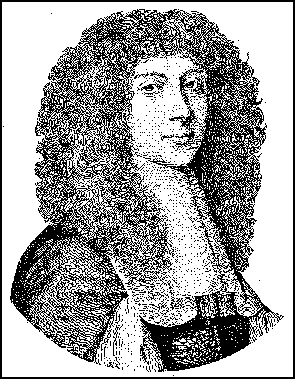Sebastian
Bach
Christoph Wolff
(Norton)
 |
Carl Heinrich Graun was one of those artists, like Per Luigi Zucchini or my uncle Sid, whose fame flickered all too briefly, a candleflame on the tavern wall. A boon companion of King Frederick the Great of Prussia, Graun celebrated the king's conquest of Upper and Lower Silesia with the first Ode to Joy --- Joy Maedelbachen Graun being his Graunmother. In return, Frederick wrote the story-board for Graun's celebrated, autobiographical operas Lohengraun and Das Rheingraun. They were produced in off-Berlin but flopped so badly that they were moved to off-off- Here the composer's fortune improved. The city of Baden-Baden had just been overrun by rats, which packed the streets, took over the gutters, ate up the sidewalks, and refused to get out of the bierstuben. But the rodents were so enchanted by Graun's music that they flocked to the operahouse to hear his new song cycle Die Liederhosenlaudenflauffen, BMW 240. The rodents were rendered quiescent by the music, so that the city building department was able to squash them with a steam roller. The composer immediately memorialized the great day in his new opera, Die Flattermaus, which was a popular success with the townspeople. The critics compared Graun to the greatest masters and the grateful city of Baden-Baden appointed him Kapellkapellmeister-meister. It was during this time that he produced his greatest secular Cantata, Ich bin ein Doppelgänger, BVD 36-long. After this triumph, Graun produced a symphony of some note (possibly E-flat, although it is hard to be sure), the moving Theme and Variations on 'Graun Grow the Grässes-Oh?' and a cycle of quartets. Unfortunately, his balance was not what it had been and he fell off the cycle going around a corner and had to switch to a tricycle. Next, he began his famous experiments in edible counterpoint, which he illustrated in his Tafelmusik, BFD 1212, for various ensembles of coldcuts. Works included the Openface Sonata for pastrami and headcheese, a set of trio sonatas with basso continuo and potato salad on the side, and the merry Sauerkraut Dances. These too were a great success with his public, which ate them up. In his Golden Years, Graun dropped music entirely to work on developing new foods for senior citizens. His crowning achievment was the cereal Graunola, the popularity of which keeps his name alive today. If you ever visit Baden-Baden, you will find a statue of Graun in the Rathausplatz, with a band of rodents (after whom the square is named) dancing happily about, nipping at his toesies.
L. W. Milam